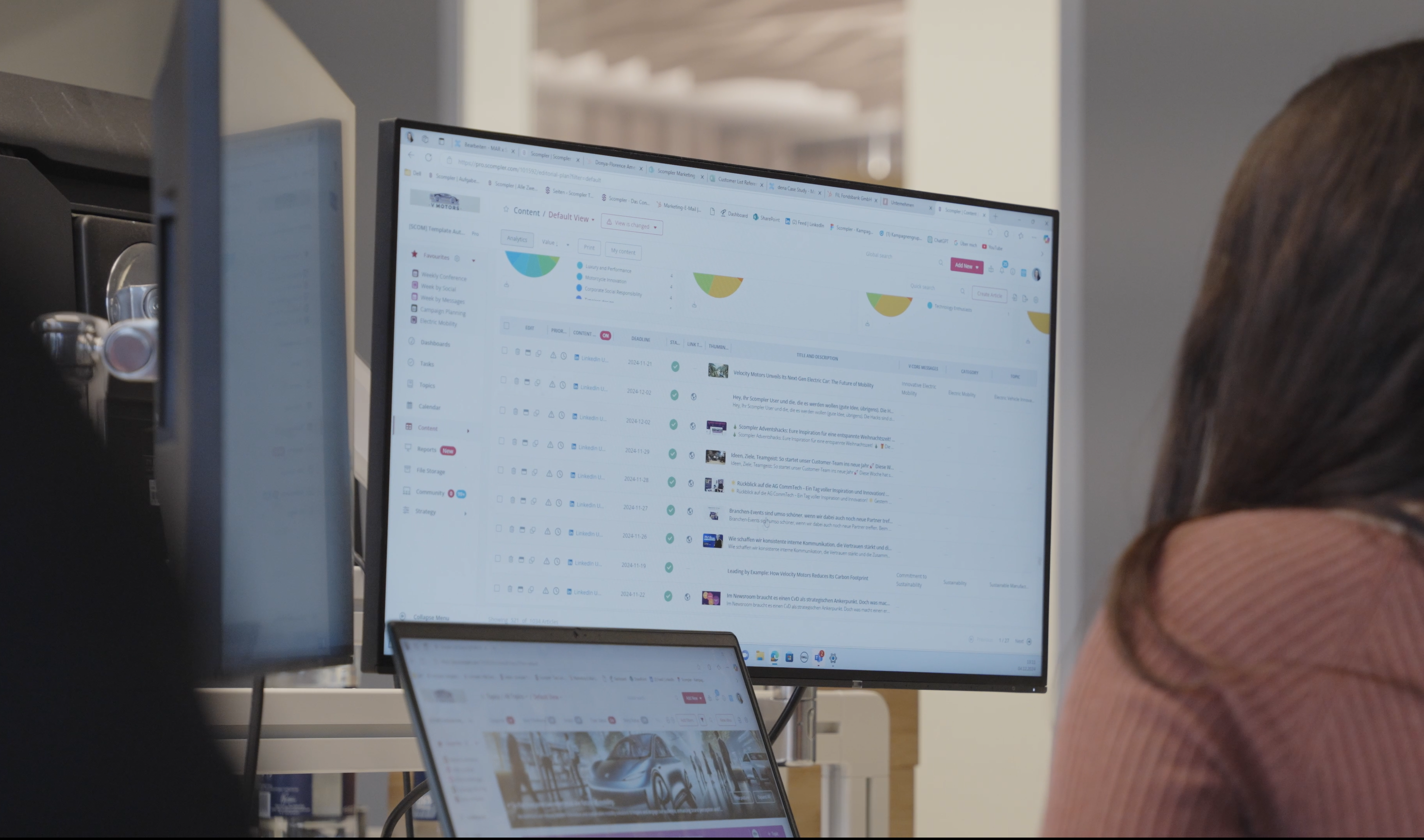
"We have to stop thinking from the canal." In principle, that sounds very simple. In practice, however, this means a huge task for us marketers and communicators. The question is: where else should we think from? The answer is: it's the other person's need. And how do you do that? The key is a consistent topic architecture: we make the need a topic in all its facets. The presentation attached below provides detailed instructions on how to do this - and an insight into how to operationalize such a topic architecture with Scompler in a very practical way.
Have you heard the term "cutting off old habits"? The phrase dates back to the beginning of the 19th century. This was the time of the Wars of Liberation, when politics, manners and customs changed dramatically. Since the 16th century, the plait had been worn by men as a headdress, and this went very much out of fashion at this time. At the time, the disappearance of the plait signified the transition to a new era. And sometimes you have to help such a transition along a little. You do this by cutting off the braids.
How many "old habits" do we need to cut in marketing and communication?
"Disruption" is the modern equivalent of "cutting off braids". What was cut off in the 19th century is "destroyed" today. In both cases, it primarily means a fairly significant change in action, attitude and mindset. Apple was disruptive because after the iPhone, a phone was no longer a phone. People began to see the phone as something completely new. The mechanical tool of disruption back then, the scissors, has now given way to a digital tool, technical innovation. However, it is important to understand that it is not the technical innovation that is the disruption, but always the underlying (or triggered) change in behavior. Which brings us to marketing. In fact, you have to ask yourself how many "old habits" currently need to be cut out of marketing. And how much help needs to be given to individuals in order to accelerate the transition. Today, no one doubts that these changes are necessary. Too many "old habits" that individuals have grown fond of no longer work. They have to go. The only question is: how easy will it be?
Is that useful or can it go away?
We are in the midst of a massive shift towards "needs-oriented" communication. This is not an esoteric or moral dimension. Anyone who does not clearly fulfill a need, i.e. "provides a benefit", no longer has a right to exist. This also applies to "content", i.e. the content of any communication, whether advertising, marketing, press relations or social media. The biggest gatekeepers, i.e. Google and Facebook, simply align their algorithms mercilessly to the needs of consumers. And anyone who doesn't comply simply gets lost in the overflowing stream of information. And even if you do manage to get through (technically), our brain - or the ad blocker - simply filters out useless information. The old Berlin saying "I wouldn't even ignore it" applies more and more often.
Content marketing meets newsroom
And that brings us to the headline. "Content marketing" and "newsroom" stand for two of the most radical changes in marketing today. "Content marketing" refers to the shift towards needs-oriented communication. And "newsroom" refers to the dismantling of silos in communication and marketing, the organization of communication by channel that still prevails today. "Content marketing meets newsroom" here means focusing on the customer's needs in a comprehensive and integrated way. As a team. This will not work with a "content marketing tool", nor will it be enough to set up a room with a high table and a large monitor. Not even if the tool is running on the monitor.
It's just not easy ...
And even if we all wish for simplicity. It is not simple. It is complex. That's where the mouse bites the bullet. The first step to success is the willingness to deal with the complex. We have tried to give this complex process enough space to make it understandable: In this presentation. We hope you enjoy it. And if you wish, we will be happy to send you this presentation as an (open) PowerPoint file. Please simply send us an e-mail.







Write a comment
Your e-mail address will not be published. Required fields are marked with *.